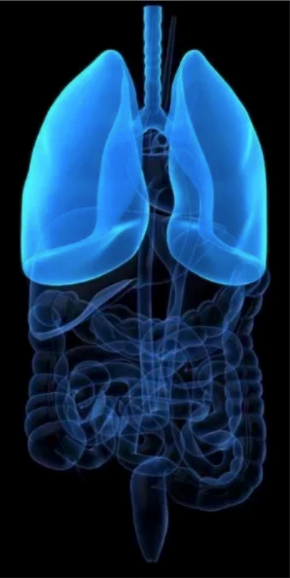Article
Frontline Domvanalimab-Based Combos Elicit Encouraging ORRs in PD-L1–High NSCLC
Author(s):
The anti-TIGIT agent domvanalimab in combination with zimberelimab with or without etrumadenant demonstrated promising objective response rates when given as a first-line treatment in patients with metastatic non–small cell lung cancer who have a PD-L1 expression of 50% or higher.

The anti-TIGIT agent domvanalimab in combination with zimberelimab (AB122) with or without etrumadenant (AB928) demonstrated promising objective response rates (ORR) when given as a first-line treatment in patients with metastatic non–small cell lung cancer (NSCLC) who have a PD-L1 expression of 50% or higher, according to data from the interim analysis of the phase 2 ARC-7 trial (NCT04262856).1
Moreover, single-agent zimberelimab was also found to have activity that is comparable to that of anti–PD-1 agents that are on the market and are currently under investigation by other companies in this setting.
No unexpected safety signals were reported at the time of the data cutoff. Additionally, the toxicity profile for each of the 3 arms examined in the study seems to be consistent with what has previously been reported with immune checkpoint inhibitors in this setting.
Arcus Biosciences, Inc., the drug developer, shared that data from the phase 2 trial will be submitted later this year for presentation at a medical meeting.
“This analysis of the dataset for. The ongoing ARC-7 study revealed encouraging clinical activity for the anti-TIGIT domvanalimab-based combinations, and furthermore, that the anti–PD-1 zimberelimab monotherapy arm showed activity similar to that of marketed anti–PD-1 antibodies studied in this setting,” Bill Grossman, MD, PhD, chief medical officer of Arcus Biosciences, Inc., stated in a press release. “Next steps are to complete enrollment in all our open domvanalimab studies, execute on our broader plans for phase 3 studies for domvanalimab across multiple cancer types, and further explore combinations with domvanalimab and etrumadenant.”
Domvanalimab is a Fc-silent monoclonal antibody that binds to TIGIT, which is a protein receptor on immune cells that serves as a brake on immune response. Cancer tells manipulate TIGIT to evade detection by the immune system. As such, the agent is designed to bind to TIGIT to free immune-activating pathways and stimulate immune cells to attack and eliminate cancer cells.
In the open-label phase 2 study, investigators are examining the safety and efficacy of domvanalimab plus zimberelimab vs zimberelimab monotherapy vs domvanalimab plus zimberelimab and etrumadenant as a frontline treatment in 150 patients with EGFR/ALK wild-type, metastatic NSCLC who have a high PD-L1 expression.
Patients needed to be at least 18 years of age, have an ECOG performance status of 0 or 1, have at least 1 measurable lesion per RECIST v1.1 criteria, and acceptable organ and marrow function.2
If patients had a medical condition that required supraphysiologic doses of corticosteroids, if they tested positive for hepatitis B or C, had any active autoimmune disease or history of autoimmune disease, or had a prior malignancy that was active within the prior 2 years with the exception of locally curative disease, they were excluded.
Study participants are being randomized 1:1:1 across the study arms. Treatment with be administered until patients experience disease progression or loss of clinical benefit. The co-primary end points of the research are ORR and progression-free survival. Key secondary end points include safety, duration of response, and disease control rates.
All 3 arms of the trial will continue to enroll patients as planned.
Moreover, domvanalimab is also under investigation in the registrational phase 3 ARC-10 trial (NCT04736173). Here, investigators are examining the safety and efficacy of the anti-TIGIT agent in combination with zimberelimab vs zimberelimab monotherapy vs chemotherapy in the frontline treatment of patients with PD-L1–positive, locally advanced or metastatic NSCLC.3 This trial is currently enrolling patients.
References
- Anti-TIGIT domvanalimab-based combinations showed encouraging clinical activity in people with metastatic, PDL1-high non-small cell lung cancer at first interim analysis of Arcus Biosciences’ randomized phase 2 ARC-7 study. News release. Arcus Biosciences, Inc. June 23, 2021. Accessed June 24, 2021. https://bit.ly/3jfm21Z
- Study to evaluate monotherapy and combination immunotherapies in participants with PD-L1 positive non-small cell lung cancer (ARC-7). ClinicalTrials.gov. Updated June 21, 2021. Accessed June 24, 2021. https://clinicaltrials.gov/ct2/show/NCT04262856
- Study to evaluate monotherapy compared to combination immunotherapies in participants with PD-L1 positive non-small cell lung cancer. ClinicalTrials.gov. Updated April 19, 2021. Accessed June 24, 2021. https://clinicaltrials.gov/ct2/show/NCT04736173









